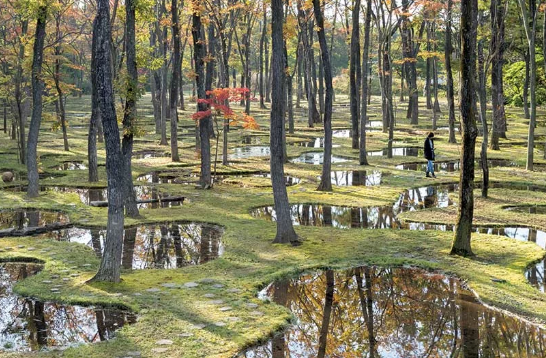Junya Ishigami: A Visionary in Landscape Architecture
Junya Ishigami, a prominent Japanese architect and landscape designer, has made remarkable strides in redefining the relationship between landscapes and human habitats. His innovative approach emphasizes harmony with nature and challenges traditional boundaries of architecture and landscaping. In this article, we will explore the principles behind Ishigami’s designs, highlight notable projects, and discuss his impact on the field of landscape architecture.
The Philosophy of Nature in Design
Ishigami’s design philosophy is rooted in the idea that architecture should not dominate nature but rather coexist with it. He believes in creating spaces that allow nature to flourish, enhancing the overall experience of both the architecture and the environment. His works often feature extensive greenery, fluid forms, and transparent structures that invite the surrounding landscape inside. This holistic approach inspires landscape architects to reconsider their roles as stewards of the environment, recognizing that each design choice influences both physical spaces and ecological balance.
Notable Projects and Their Impact
One of Junya Ishigami’s most celebrated projects is the “Kanazawa 21st Century Museum of Contemporary Art,” which features a unique, open design that integrates art with natural scenery. Additionally, his experimental work on the “Cloud Garden” affirms his commitment to blending architecture with landscape, showcasing how public spaces can be both functional and visually stunning. These projects demonstrate not only aesthetic appeal but also the potential for architecture to foster community engagement with the surrounding environment. By pushing the boundaries of conventional design, Ishigami’s work continues to inspire future architects and landscape professionals.
The Future of Landscape Architecture
As sustainability becomes increasingly significant in architecture and landscape design, Ishigami’s work serves as a benchmark for emerging trends. His focus on organic forms, local materials, and ecological considerations creates inspiring templates for future projects. Landscape architects can learn from his methodologies, integrating sustainable practices and innovative techniques to address environmental challenges. Moreover, as urban areas grow, Ishigami’s designs highlight the importance of green spaces for enhancing urban life and public health.
Conclusion
Junya Ishigami’s influential work in landscape architecture highlights the profound impact that thoughtful design can have on our relationship with nature and urban spaces. By embracing his philosophy of harmony, landscape architects can aspire to create environments that are both beautiful and beneficial. If you’re interested in exploring this field further, consider diving into Ishigami’s projects or researching sustainable practices that prioritize ecological balance.

